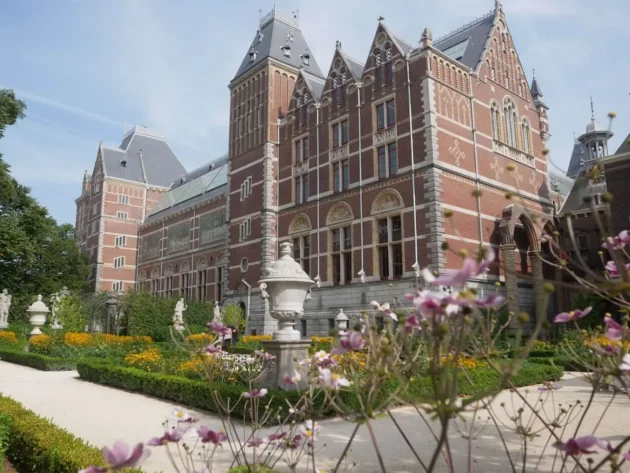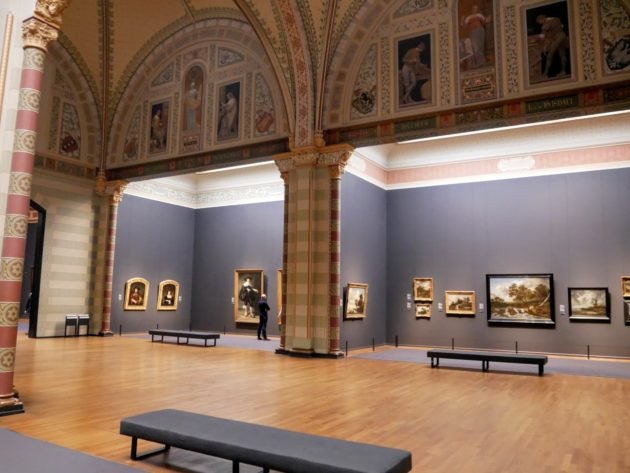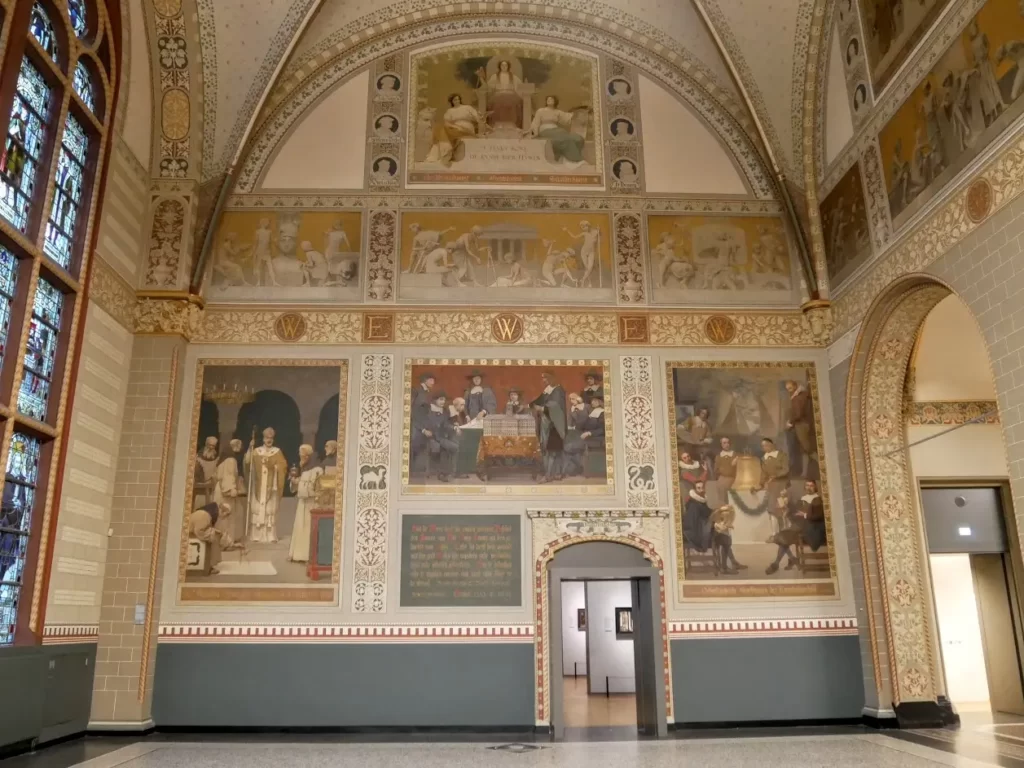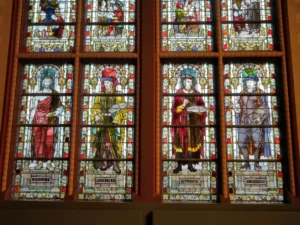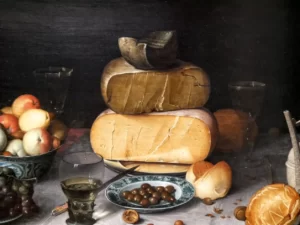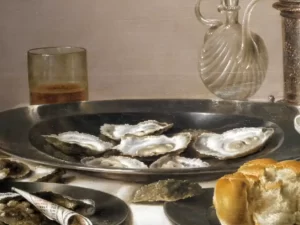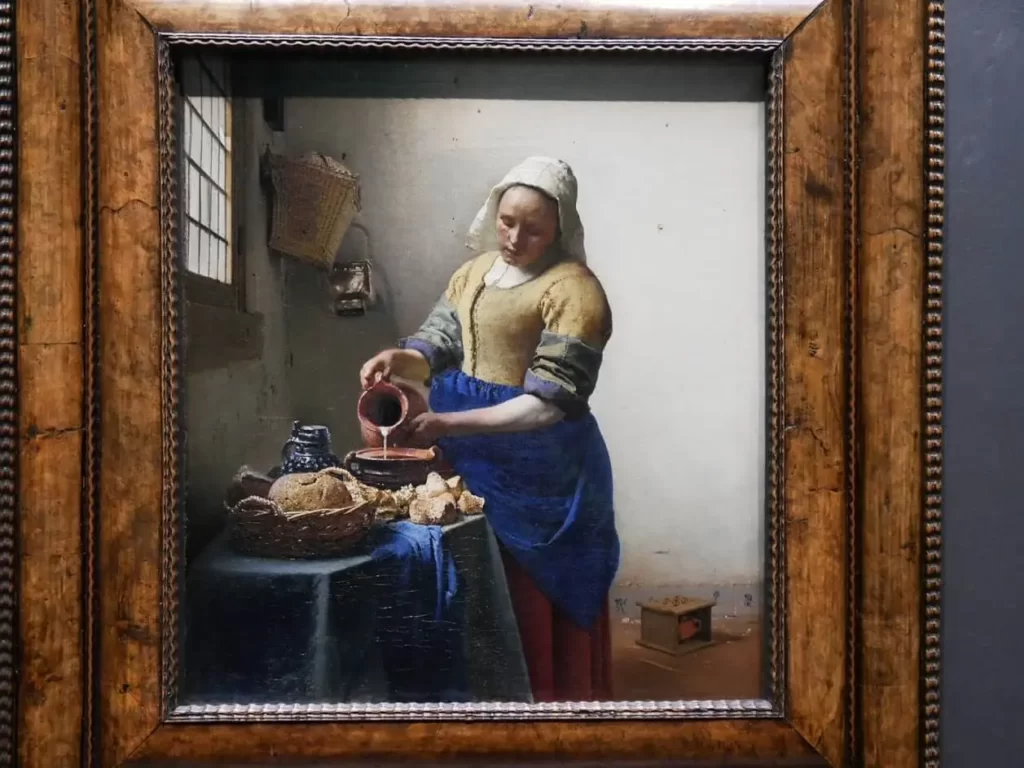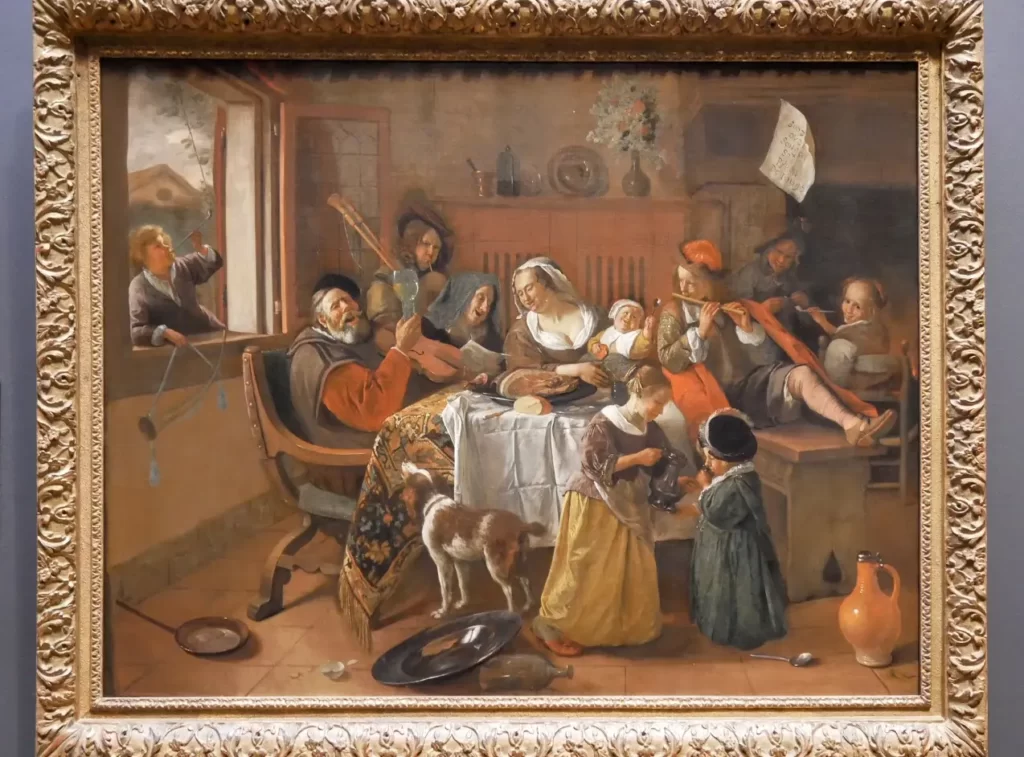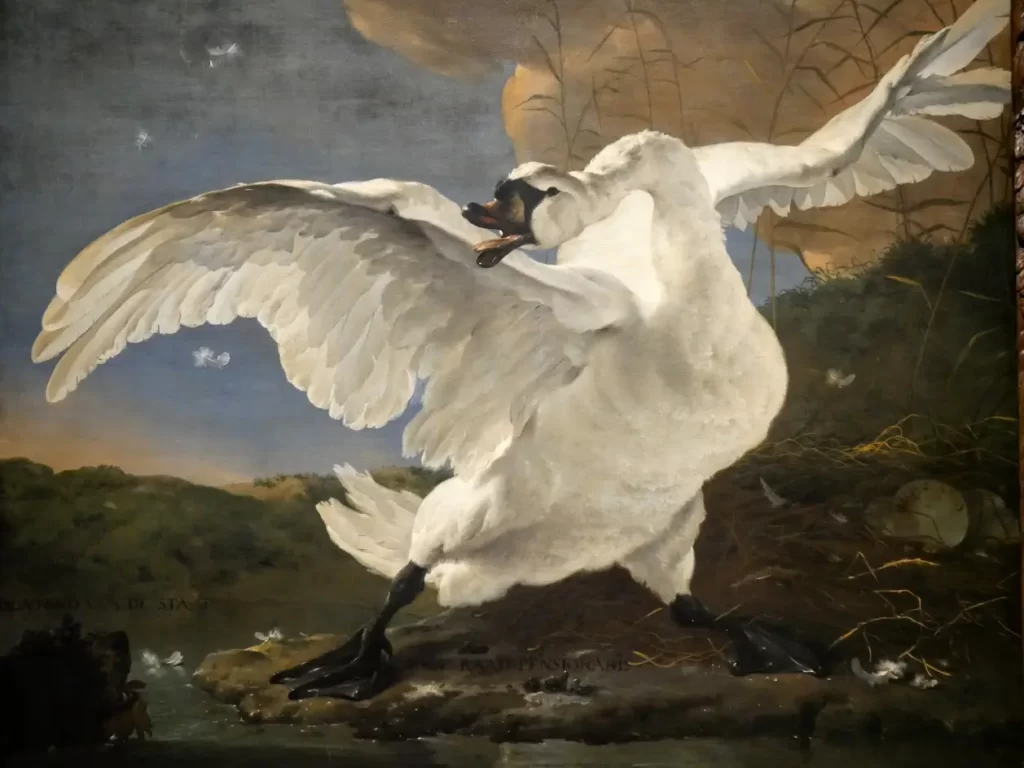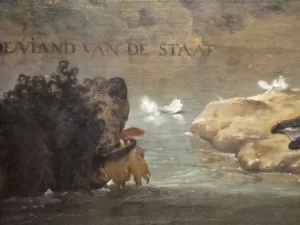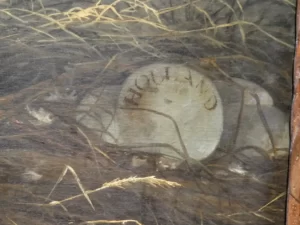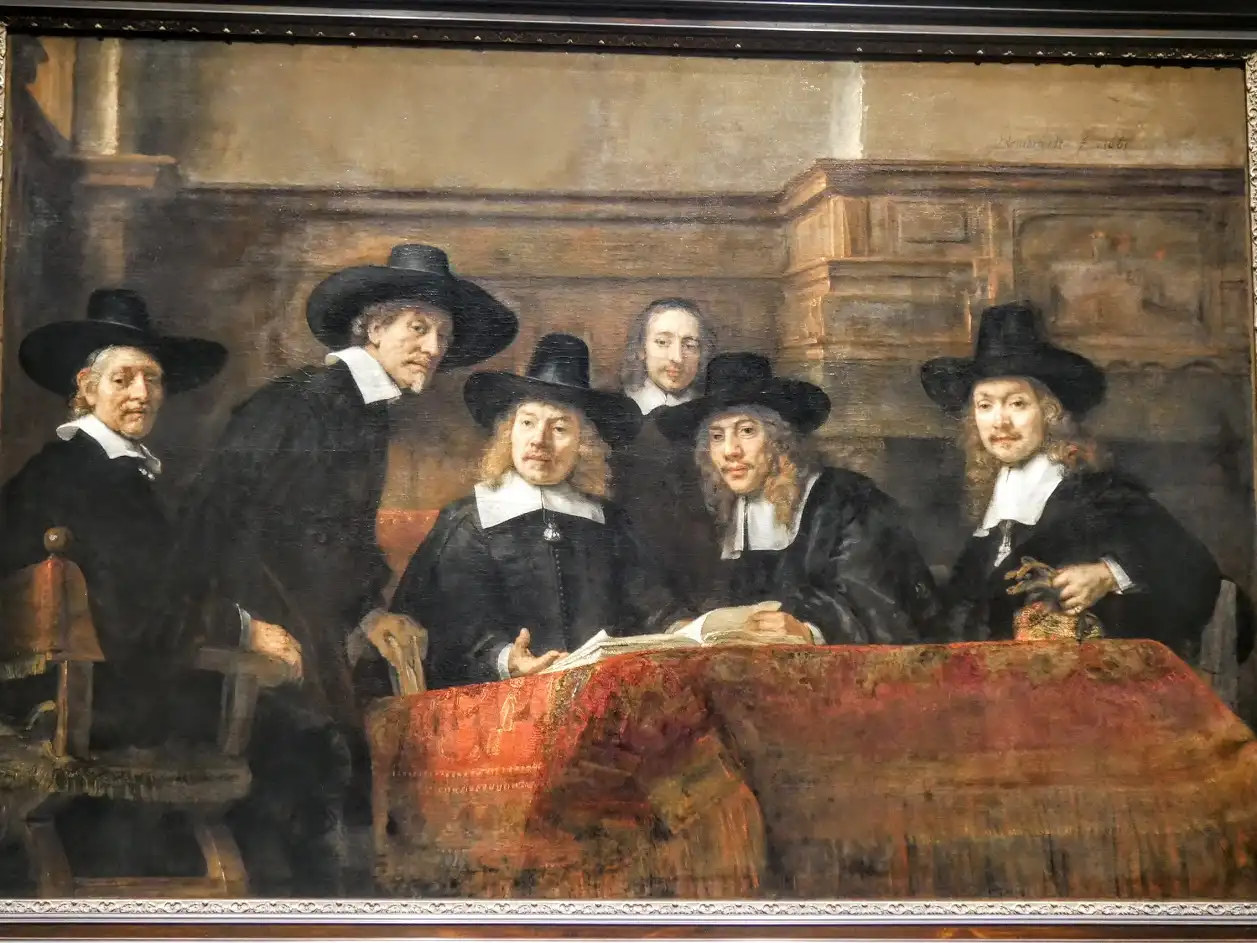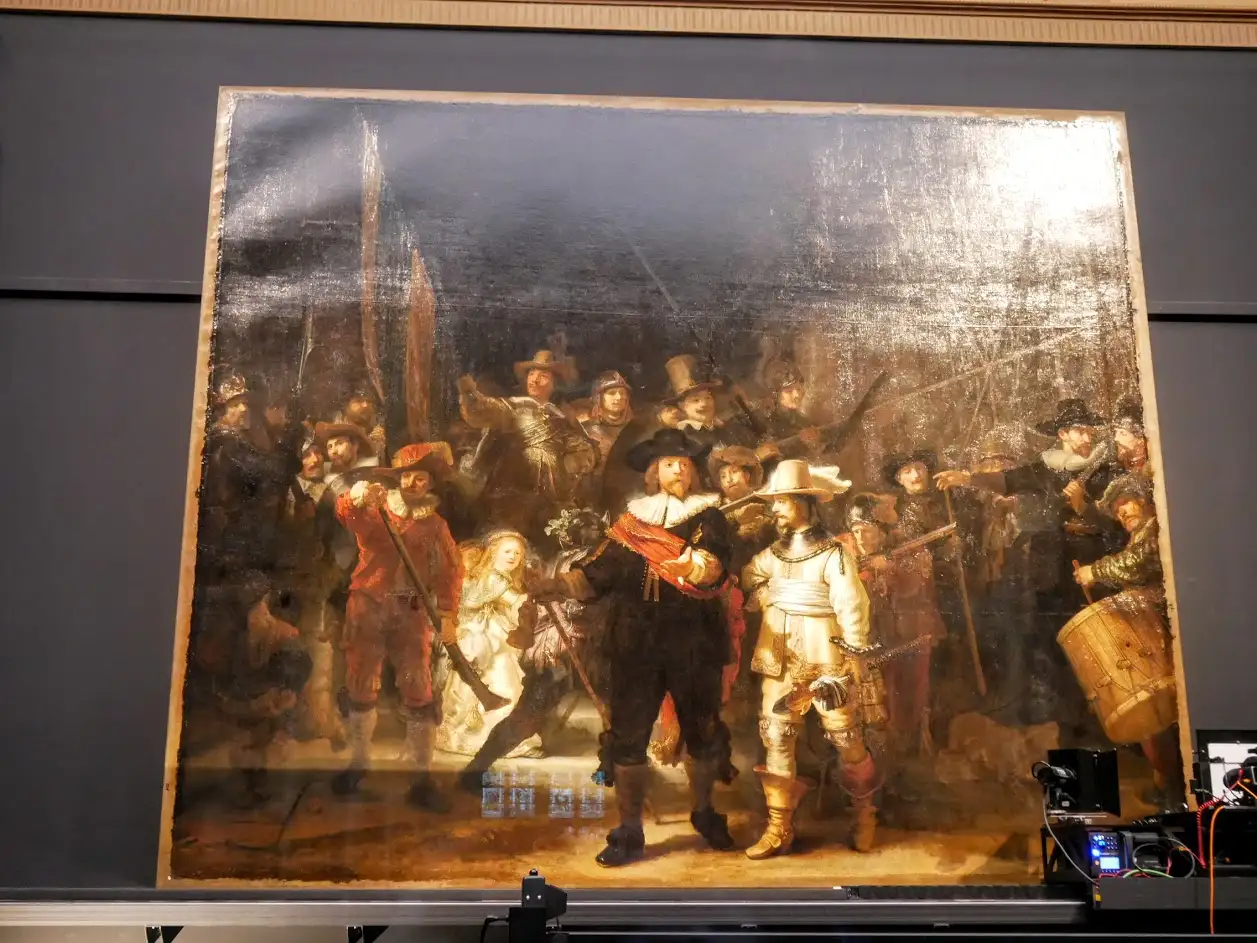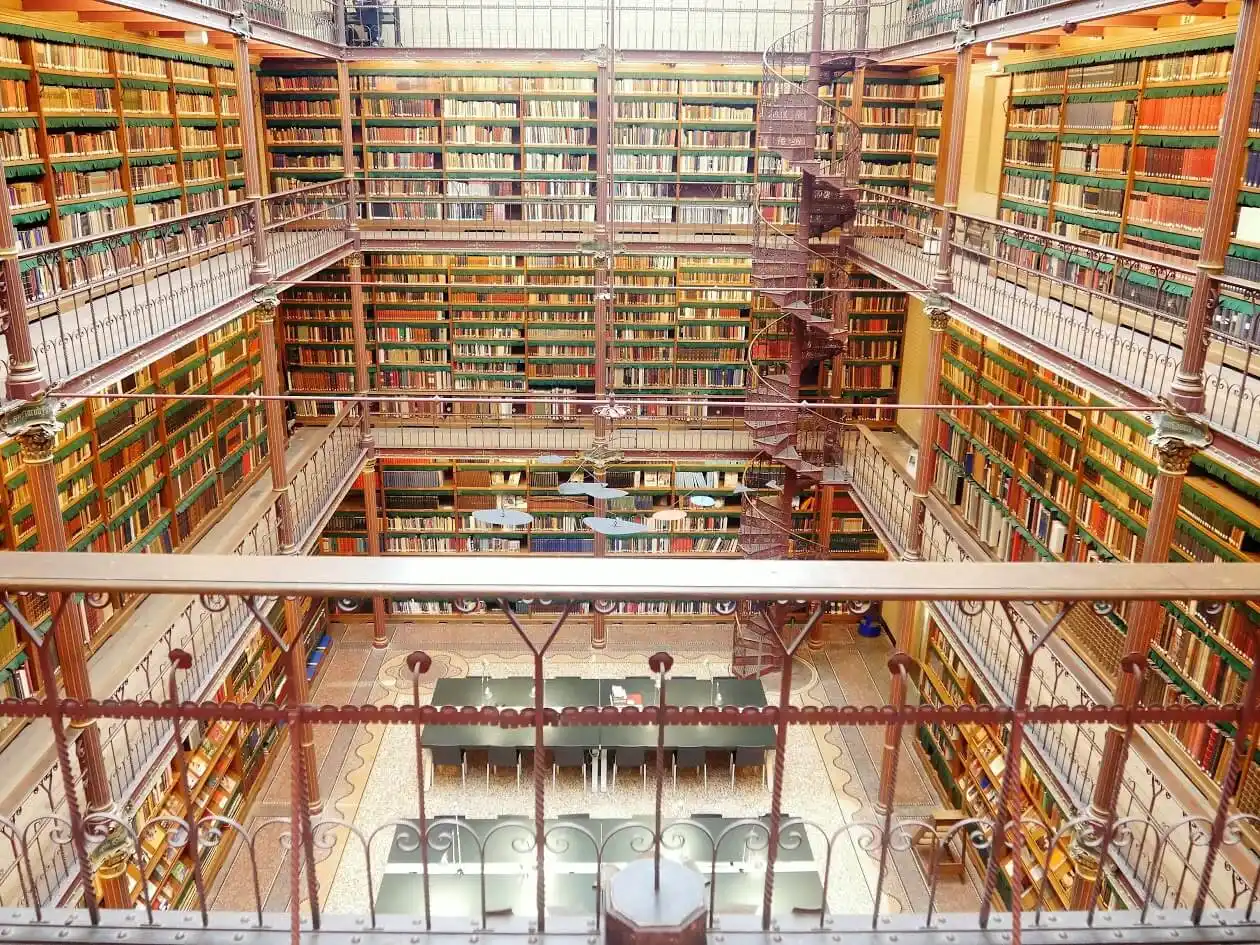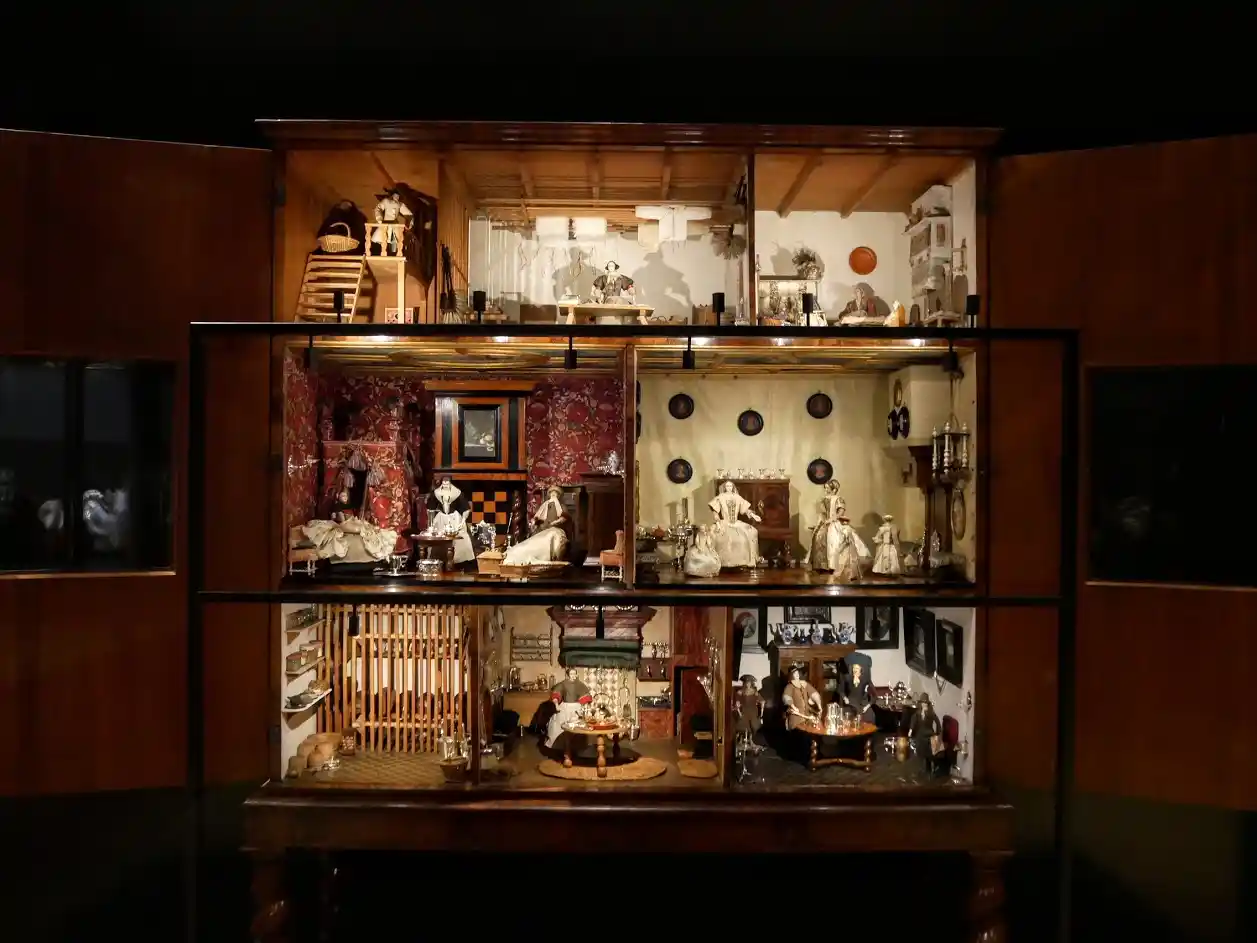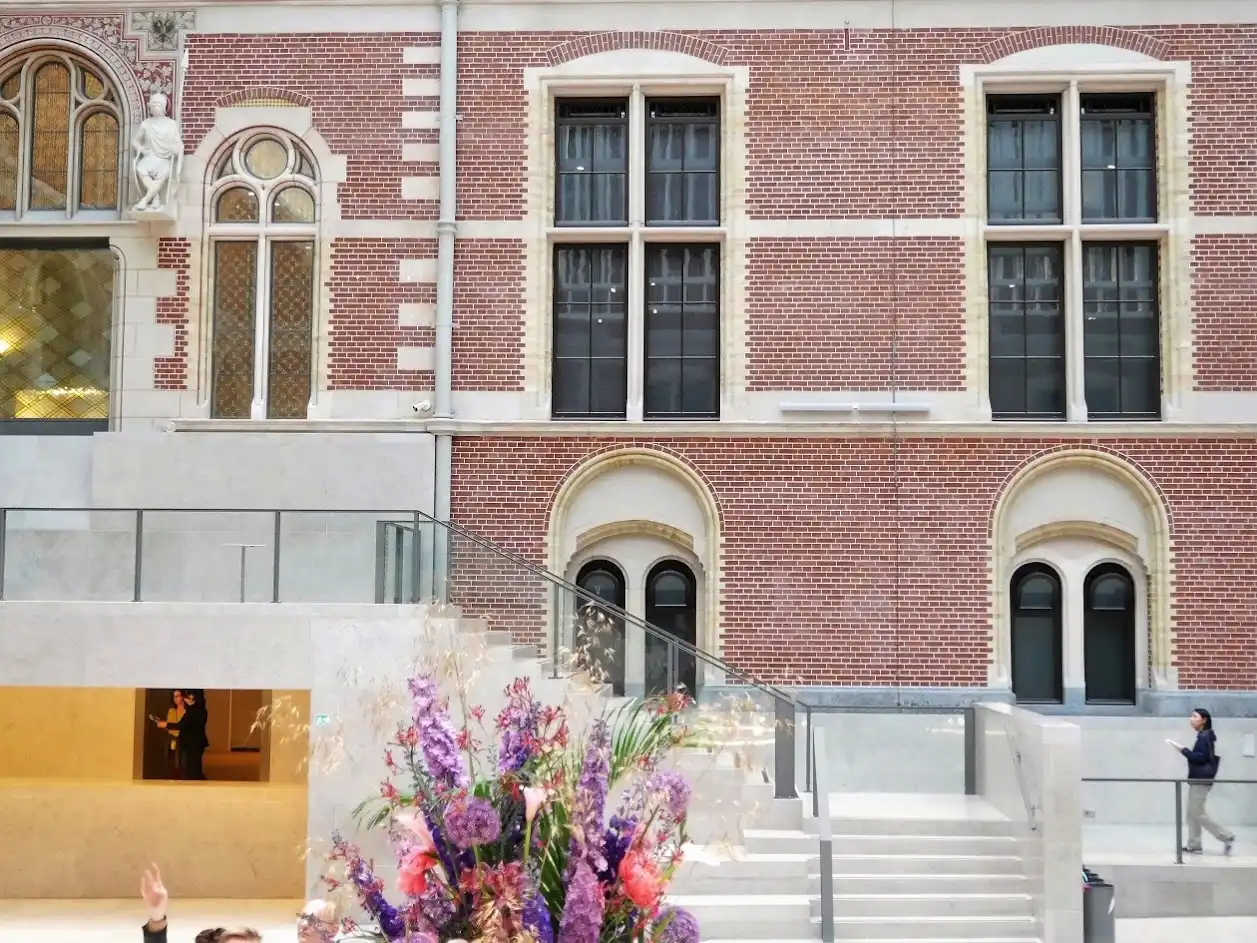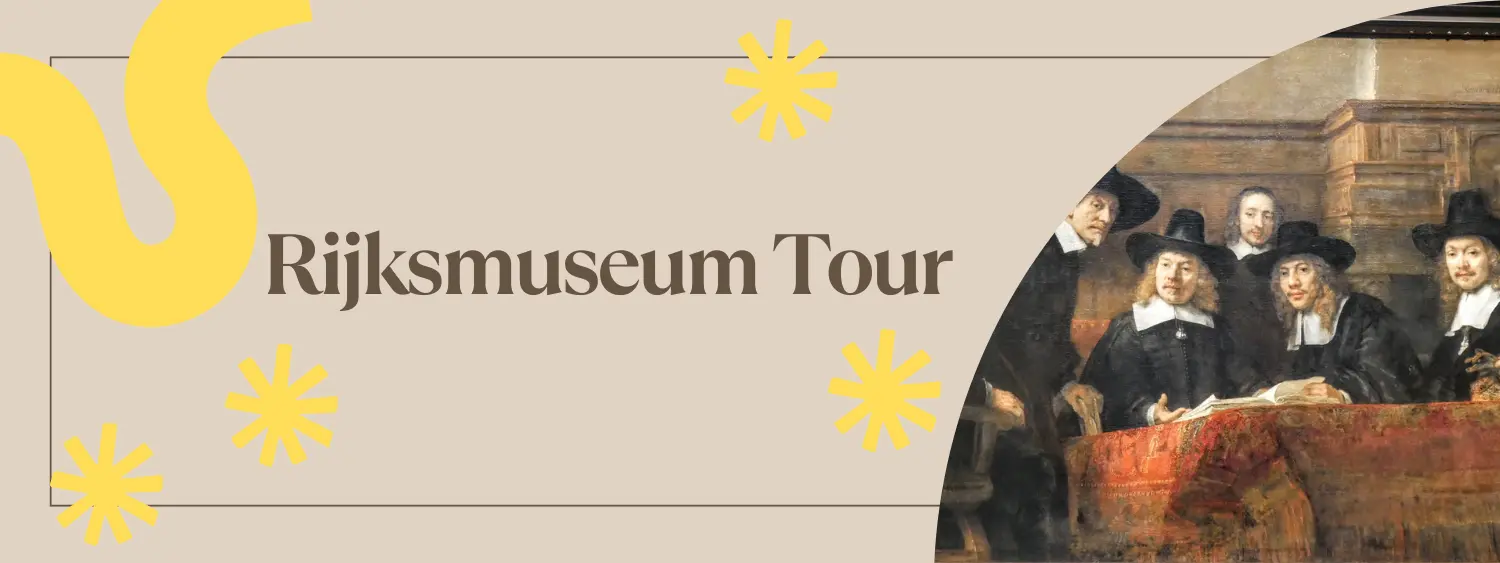The Rijksmuseum Highlights blog post was first published on 17 April 2020, and updated on 21 November 2025.
Rijksmuseum, the Royal Museum of the Netherlands, is one of the most famous museums in the world. And the one you definitely shouldn’t miss while in Amsterdam. Covering more than 800 years of Dutch art and history, it’s home to around one million objects. That’s why it could be a bit challenging to plan your visit to it and decide on what to see at the Rijksmuseum. To make your choice easier and help you plan a great visit to the Rijksmuseum, here are some of the Rijksmuseum highlights you shouldn’t miss.
What to see at the Rijksmuseum
This post contains some affiliate links. Read the Privacy Policy for more info.
I have worked as a guest guide at the Rijksmuseum for almost ten years. So, I learned my way around that massive museum, as well as some of the tips and tricks to make a visit to it much more enjoyable. But let me tell you what to see at the Rijksmuseum first.
⤷ Read more: 10 Things you didn’t know about the Rijksmuseum
Would you like me to be your guide at the Rijksmuseum?
I work as a guest guide at the Rijksmuseum, and have visited that wonderful place numerous times, both as a guide and also privately, as a visitor. With its fascinating collection, it’s one of my favourite museums.
Would you like to join me on a tour around the Rijksmuseum?
I’d love to show you some of the Rijksmuseum highlights and tell you the stories behind them. It will also help you navigate around thousands of exhibits at the museum. Check out my museum tours on this link or get in touch for more info.
Rijksmuseum highlights
With so many galleries and objects on display, it would take a few days, if not even weeks, to see the whole museum. However, here are some of the Rijksmuseum highlights you should include in your visit and see at the Rijksmuseum.
I would always suggest that you start with the Gallery of Honour and explore some of the exhibits on the second floor first. You can have a short break at the Rijksmuseum cafe, and explore some of its special collections after that.
⤷ Watch: My Rijksmuseum Highlights Video
What to see on the second floor of the Rijksmuseum
1 – The Great Hall
This is probably one of the most beautiful galleries and a place you shouldn’t miss in the Rijksmuseum. Its walls are decorated with large wall paintings celebrating Dutch history and art. One of them is covered with large stained glass windows with depictions of famous, mostly Dutch, artists.
From there you can enter the Gallery of Honour, where a collection of the most famous Dutch Golden Age paintings are, including the work of Rembrandt and Vermeer.
2 – Still Lifes
Dutch Golden Age still lifes are great paintings to learn more about everyday life in 17th-century Amsterdam. You’ll notice some very typical Dutch food in them, like cheese or a pie. But, you’ll also find some very luxurious food, like, for example, oysters. With many hidden symbols and details in them, they are some of the most interesting paintings at the Rijksmuseum.
⤷ Read more: Still Lifes at the Rijksmuseum
⤷ Watch: My 3-minute Art History video about one of the still lifes from the Rijksmuseum
3 – Vermeer’s paintings
Johannes Vermeer is one of the most famous Dutch painters, and you can see some of his most famous paintings displayed at the Rijksmuseum. The Milkmaid is a beautiful example of the way he showed the light in his paintings. But the Woman in Blue Reading a Letter will show you how Vermeer was even more fascinated by a shadow in his paintings than by light.
⤷ Read more: Johannes Vermeer’s paintings at the Rijksmuseum
4 – Jan Steen’s paintings
Jan Steen was the Dutch painter with, without a doubt, the best sense of humour. In his The Merry Family, you’ll see some misbehaved children smoking and drinking. On the other hand, The Feast of Saint Nicholas witnesses a long tradition of celebrating that important, and still the most popular, holiday in the Netherlands. My favourite detail in it is definitely a 17th-century Dutch stroopwafel.
5 – The Threatened Swan
A famous painting created by Jan Asselijn is one of the most captivating paintings in the Rijksmuseum. At first glance, the painting shows a swan threatened by a dog. However, this artwork is filled with hidden political symbolism.
⤷ Read more: Where to See Rembrandt’s Paintings in Amsterdam
6 – Rembrandt’s paintings
The Rijksmuseum is also home to some very famous paintings created by Rembrandt van Rijn. From one of his earliest self-portraits to large wedding portraits of Maerten Soolmans and Oopjen Coppit, The Syndics and The Jewish Bride, there are many of Rembrandt’s paintings you shouldn’t miss in the Rijksmuseum.
⤷ Read more: Locations linked to Rembrandt in Amsterdam
7 – The Night Watch
The most famous painting at the Rijksmuseum is Rembrandt’s Night Watch. The famous painter worked on this masterpiece for three years (1639-1642), and it’s filled with portraits of famous Amsterdammers, symbolism, and a previously unseen way of using the light.
The painting is undergoing extensive research and restoration at the moment. However, visitors can still see it behind the glass wall.
⤷ TIP: When in front of the Night Watch, look at the floor below the painting. You may be surprised to see a little door in it. It’s the only painting in the world with a private emergency fire exit.
8 – Rijksmuseum Library
Night Watch is displayed at the end of the Gallery of Honour. After seeing it, turn right and continue walking to the end of the long gallery. This is where you’ll find another Rijksmuseum gem, the largest art history library in the Netherlands.
The library’s interior looks as if it were taken from the Harry Potter books. It’s open to the public, and people are often reading in it, so be quiet while visiting this Rijksmuseum highlight.
⤷ Read more: Literary Guide to Amsterdam
9 – The Dolls’ Houses
Once out of the Library, continue walking through the galleries filled with paintings and furniture made during the Dutch Golden Age. On your way, you’ll stumble upon the room dedicated to some of the most interesting furniture pieces from the 17th century – the dolls’ houses.
They weren’t childrens’ toys, but were rather central pieces of the living rooms in many canal houses you’ll spot along the Amsterdam canals. Beautifully made, they were exceptional and quite expensive artworks. Today, they also help us understand what many of those canals used to look like when they were built.
⤷ Read more: The Rembrandt House Museum in Amsterdam
10 – Delft Blue
In the next gallery, you’ll find some of the most famous Dutch products from the 17th century, the Delft Blue. Inspired by Chinese porcelain, the Dutch started their own production in the early 17th century. Coloured in white and blue, you’ll see all the different kinds of objects there. However, the most unique are the flower pyramids used to display tulips.
⤷ TIP: If you’re wondering what they looked like with flowers in them, pay a visit to the Rijksmuseum cafe on the ground floor, where one of those large flower pyramids is decorating the main table.
Other collections at the Rijksmuseum
If you still have some energy left after seeing these ten Rijksmuseum highlights on the second floor, explore some of the museum’s other collections.
Special collections on the ground floor
You’ll find many interesting exhibits in some of the Rijksmuseum’s special collections on the ground floor. From the wooden ship models, musical instruments, jewellery, Delft blue, and glass, you could spend hours in that part of the museum alone.
Dutch 19th-century art on the first floor
Another part of the Rijksmuseum that shouldn’t be missed is a collection of 19th-century art. You’ll find artwork of Dutch Impressionists, the Hague School painters, and a small collection of Van Gogh’s paintings there.
⤷ Read more: Art History Lesson – Vincent van Gogh
Temporary exhibitions
The Rijksmuseum often organises fantastic temporary exhibitions. From one of the most significant shows about Rembrandt ever held, to shows dedicated to Frans Hals and Johannes Vermeer, to some exciting collaborations with some of the best museums from around the world, you’ll always find something interesting going on.
Check out the museum website for the updated info about the temporary exhibitions.
⤷ Read more: The best museums in Amsterdam
Tips for visiting the Rijksmuseum
When to visit the Rijksmuseum?
The Rijksmuseum receives more than a million visitors each year. So, as you can imagine, it could get quite busy in it. The busier time is during April, when the tulip season attracts many visitors to Amsterdam. It’s also busier than usual during the summer months (June – September) and during the Christmas holidays in Amsterdam.
If you’re going to visit during those busy months, plan your visit earlier in the day, around 9 a.m., when it opens. Visit first some of its most popular areas, like the Gallery of Honour. It’s pretty quiet in the museum during that first hour, so it’s perfect for enjoying some of the Rembrandt’s or Vermeer’s paintings during that time.
How to get to the Rijksmuseum?
The Rijksmuseum is easily reachable by public transport from anywhere in Amsterdam. The closest tram station is Museumplein, where trams number 2, 5 and 12 stop. Just behind the museum is another tram stop, Rijksmuseum. This is where you can get on trams number 1, 7 and 19.
If you’re coming from Amsterdam Central Station, you can take tram number 2 or 12. Or take the metro line number 52 in the direction of South (Zuid in Dutch). You’ll only need to ride for two stops and exit at the metro stop Vijzelgracht. From there, it will take you a short ten-minute walk to get to the Rijksmuseum.
⤷ TIP: A great free app you should use for public transport in Amsterdam is 9292. You can enter your location and where you’d like to go, and you’ll get the best public transport options for getting there (with delays included).
⤷ Read more: What to See at Museumplein in Amsterdam
How to buy the entrance ticket to the Rijksmuseum?
I strongly advise you to buy your Rijksmuseum ticket online (you can do that through this link). Someone from the Rijksmuseum staff usually stands in front of the museum and sells tickets. However, to avoid queuing in front of the museum, buy your tickets online. You’ll need to choose the date and time of your visit, and show tickets on your phone or printed when you enter the museum.
Taking a tour of the Rijksmuseum
As a Rijksmuseum guest guide, I always advise my friends to take a tour at the Rijksmuseum. It just makes such a huge difference when you have someone explaining to you all the details and hidden symbolism of those fantastic paintings at the Rijksmuseum.
⤷ Check out my Amsterdam museum tours on this link or get in touch for more information.
Where to leave your backpack and a coat when in the Rijksmuseum?
You’ll find a garderobe on the ground floor of the Rijksmuseum. Although you can leave your coat there, I wouldn’t advise you to do that. The reason is simple – you could spend quite some time waiting in a queue to do that.
Instead, go to the locker area and leave it there. You can come and go as you please, and you won’t need to stand in line and wait for your items.
⤷ TIP: You are not allowed to enter the Rijksmuseum galleries with large bags and backpacks (larger than A4 size). So, try to plan not to have it with you when visiting the museum or leave it in a locker.
The Rijksmuseum is one of the best museums in the world and the one that shouldn’t be missed when visiting Amsterdam. I hope this list of the Rijksmuseum highlights will help you plan your visit to that fascinating museum.
⤷ TIP: Would you like to visit some other Dutch cities filled with art and culture? Check out Haarlem, Maastricht or Rotterdam.

